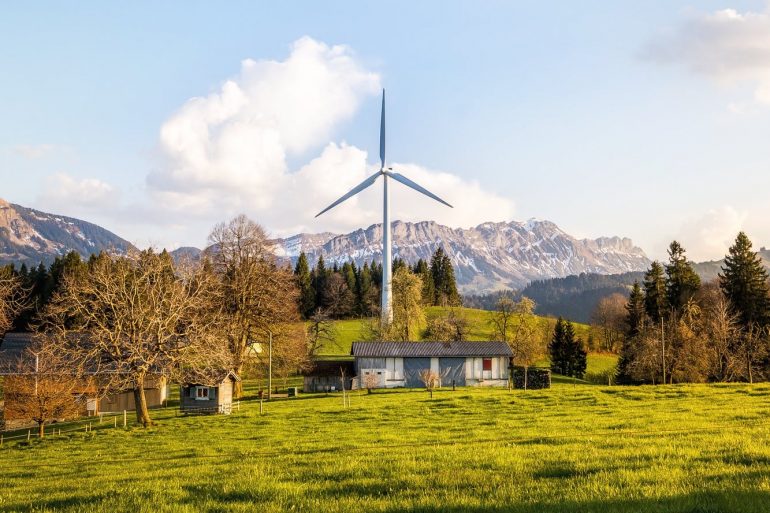
Renewable energy technologies have a lot of potential in Pakistan to bridge the gap between supply and demand. Renewable energy projects have the potential to provide energy security, provide socioeconomic advantages, reduce pollution in the surrounding region, and mitigate climate change.
Renewable energy have a lot of potential in Pakistan however, the country’s present output is pitiful. Solar power contributes for only 1.16 percent of the country’s electricity production, whereas fossil fuels account for 64 percent. Hydropower accounts for 27% of total electricity generation, whereas nuclear accounts for 5%. Renewable energy sources only contribute for 4% of overall electricity generation.
Wind energy, solar energy, geothermal energy, ocean energy, biomass energy, and fuel cell technologies can all be utilized to help Pakistan overcome its energy problem. Pakistan has an abundance of solar, wind, biomass, and hydro energy resources. The ability of each of these energy resources to assist in meeting energy demands.
Solar Energy Pakistan:
Pakistan’s sunny climate makes it an ideal location for solar energy development. However, it continues to rely on polluting fossil fuels and is expanding its coal-fired power facilities. Pakistan has a huge potential for solar-powered electricity generation. According to the World Bank, Pakistan’s current electricity demand could be met by using only 0.071 percent of the country’s land for solar photovoltaic (solar PV) power output. Solar Power Pakistan is located in a location with high sun irradiation, making it excellent for solar energy installations. Each year, Pakistan receives around 15.5×1014 kWh of solar irradiation, with most locations receiving 8 to 10 hours of sunlight each day. Harvesting solar energy with solar collectors is one technique to extract it. Solar collectors can capture as much solar energy as possible and transmit it to a working fluid. This heated working fluid can be used immediately for domestic heating or saved for later use.
Wind Energy Pakistan
Wind energy is a type of energy conversion in which turbines transform wind kinetic energy into mechanical or electrical energy that can be utilized to generate electricity. Wind energy is regarded as one of the most efficient renewable energy sources. The coastal belts of Sindh and Balochistan, as well as the desert parts of Punjab and Sindh, have significant wind energy potential. Wind energy has also been believed to give significant technical potential in Pakistan, notably in Sindh and Balochistan’s southern regions. Pakistan has a coastline of about 1000 kilometers, with typical wind speeds ranging from 5-7 m/s. Wind is the world’s fastest-growing energy source with the least negative environmental impact.
Biomass Energy
Pakistan has a lot of potential for electricity generation from biomass resources. More than 60% of the country’s population is involved in agricultural pursuits, indicating that it is an agrarian economy. The availability of biomass is also widespread in Pakistan. On a daily basis, some 50 000 tonnes of solid trash, 225 000 tonnes of crop residue, and over one million tonnes of animal manure are produced. According to the World Bank, Pakistan has roughly 26,280,000 hectares of land under agriculture. Crop residues, animal dung, and municipal solid wastes are the main sources of biomass energy. When biomass is burned, it produces heat in the same way that wood logs do in a bonfire. Biomass energy generates electricity from natural materials such as trees and plants. It can also generate from rubbish and other waste materials.
Hydro Energy
The burning of fossil fuels for the generation of power emits a large amount of greenhouse gas emissions into the atmosphere, causing global warming and rising sea levels, which has harmed human civilization. Water resources can be used for agriculture and can also be used to generate electricity through hydropower. Pakistan has used hydro as the sole sustainable energy option for large-scale power generation. Pakistan now has a hydroelectric capacity of about 6.6 GW installed. Despite its lack of oil and gas, Pakistan has a tremendous potential for hydropower, coal, wind, and solar energy. Pakistan’s hydropower potential is believed to be at 60,000 MW, however only 11% of it is used to generate energy, leaving the rest untapped.
Renewable energy resources are undeniably abundant in Pakistan, and they offer tremendous technical potential for meeting energy demands. The technological potential and availability of renewable energy resources alone provide little insight into a country’s ability to implement renewable energy projects.
